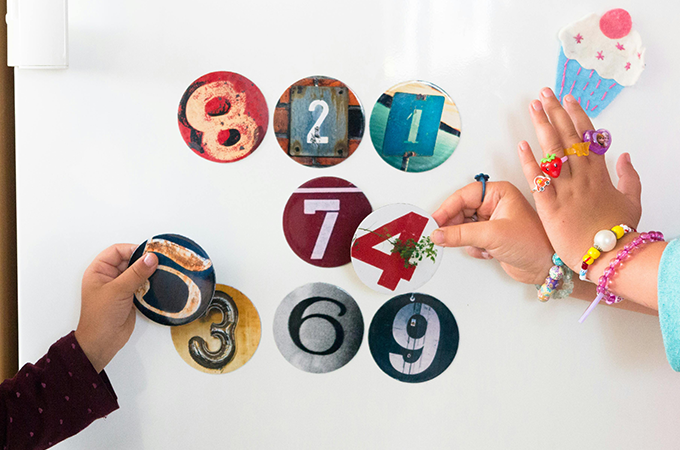Blog > Numbers > How To Count in Tshiluba

How To Count In Tshiluba
Learn to count in Tshiluba by understanding the syntax and the methods employed for detailed numeration. By the end of the article, readers will have gained a solid understanding of how to count in Tshiluba and will be equipped with the tools and knowledge needed to apply this skill in real-life situations.
Lire En Français
 Children counting numbers on a board
Children counting numbers on a board
Cardinal numbers serve as the foundation for mathematical operations and scientific calculations. They are used in arithmetic, algebra, geometry, and other branches of mathematics, as well as in scientific disciplines such as physics, chemistry, and biology.Cardinal numbers are fundamental for counting and quantifying objects, people, or entities in everyday life. They provide a precise way to express numerical quantities, allowing for accurate measurement and comparison.
The Cardinal Numbers 0-999,999
The cardinal numbers 0-999,999 in Tshiluba are as follows:
| Cardinal Numbers 0-999,999 |
|
|---|---|
| 0 | tshijengu |
| 1 | umwe |
| 2 | ibidi |
| 3 | isatu |
| 4 | inayi |
| 5 | itanu |
| 6 | isambombo |
| 7 | muanda-mutekete |
| 8 | muanda-mukulu |
| 9 | tshitema |
| 10 | dikumi |
| 11 | dikumi ne umwe |
| 12 | dikumi ne ibidi |
| 13 | dikumi ne isatu |
| 14 | dikumi ne inayi |
| 15 | dikumi ne itanu |
| 16 | dikumi ne isambombo |
| 17 | dikumi ne muanda-mutekete |
| 18 | dikumi ne muanda-mukulu |
| 19 | dikumi ne tshitema |
| 20 | makumi abidi |
| 30 | makumi asatu |
| 40 | makumi anayi |
| 50 | makumi atanu |
| 60 | makumi asambombo |
| 70 | makumi muanda-mutekete |
| 80 | makumi muanda-mukulu |
| 90 | makumi tshitema |
| 99 | makumi tshitema ne tshitema |
| 100 | lukama |
| 101 | lukama ne umwe |
| 110 | lukama ne dikumi |
| 111 | lukama dikumi ne umwe |
| 200 | nkama ibidi |
| 300 | nkama isatu |
| 400 | nkama inayi |
| 500 | nkama itanu |
| 600 | nkama isambombo |
| 700 | nkama muanda-mutekete |
| 800 | nkama muanda-mukulu |
| 900 | nkama tshitema |
| 999 | nkama tshitema makumi tshitema ne tshitema |
| 1,000 | tshinunu |
| 1,100 | tshinunu ne lukama |
| 1,110 | tshinunu lukama ne dikumi |
| 1,111 | tshinunu lukama dikumi ne umwe |
| 2,000 | binunu bibidi |
| 3,000 | binunu bisatu |
| 4,000 | binunu binayi |
| 5,000 | binunu bitanu |
| 6,000 | binunu bisambombo |
| 7,000 | binunu muanda-mutekete |
| 8,000 | binunu muanda-mukulu |
| 9,000 | binunu tshitema |
| 9,999 | binunu tshitema nkama tshitema makumi tshitema ne tshitema |
| 10,000 | lubombu |
| 10,100 | lubombu ne lukama |
| 10,111 | lubombu lukama dikumi ne umwe |
| 11,000 | lubombu ne tshinunu |
| 11,111 | lubombu tshinunu lukama dikumi ne umwe |
| 12,000 | lubombu ne binunu bibidi |
| 13,000 | lubombu ne binunu bisatu |
| 20,000 | mbombu ibidi |
| 30,000 | mbombu isatu |
| 40,000 | mbombu inayi |
| 50,000 | mbombu itanu |
| 60,000 | mbombu isambombo |
| 66,666 | mbombu isambombo binunu bisambombo nkama isambombo makumi asambombo ne isambombo |
| 70,000 | mbombu muanda-mutekete |
| 80,000 | mbombu muanda-mukulu |
| 90,000 | mbombu tshitema |
| 99,999 | mbombu tshitema binunu tshitema nkama tshitema makumi tshitema ne tshitema |
| 100,000 | tshishikula (tshimwe) |
| 123,456 | tshishikula tshimwe mbombu ibidi binunu bisatu nkama inayi makumi atanu ne isambombo |
| 150,000 | tshishikula tshimwe ne mbombu itanu |
| 200,000 | tshishikula tshibidi |
| 300,000 | tshishikula tshisatu |
| 400,000 | tshishikula tshinayi |
| 500,000 | tshishikula tshitanu |
| 600,000 | tshishikula tshisambombo |
| 700,000 | tshishikula muanda-mutekete |
| 800,000 | tshishikula muanda-mukulu |
| 900,000 | tshishikula tshitema |
| 999,999 | tshishikula tshitema mbombu tshitema binunu tshitema nkama tshitema makumi tshitema ne tshitema |
Orders of Magnitude
Upon observation, it can be noted that Tshiluba employs a new word corresponding to each order of magnitude. The first three orders of magnitude are widely known by Lubaphones; however, only the most knowledgeable of Lubaphones can provide evidence on the etymology of the orders of magnitude in Tshiluba after the first three. For example:
10 = dikumi
10^2 = 100 = lukama
10^3 = 1000 = tshinunu.
From 10^4 and onward, there is widespread uncertainty of which words can be applied in Tshiluba.
The most common appearance of 10^4 employed by Lubaphones is the form binunu dikumi, which translates to 1000 by 10; however, given the nature of Tshiluba orders of magnitude, it is observed that each order of magnitude is called by an entirely new word, and not a combination of two smaller orders of magnitude. Employing the new orders of magnitude (tshishikula & lubombu) remove the redundancy found when stating numbers above in the thousands; thus we have:
10 = dikumi
10^2 = 100 = lukama
10^3 = 1,000 = tshinunu.
10^4 = 10,000 = lubombu
10^5 = 100,000 = tshishikula.
European languages enumerate from tens, to hundreds, to thousands, to millions, while not employing new words to describe tens of thousands and hundreds of thousands. Bantu languages do not follow european language syntax in this regard, and it is important for bantu linguists to study the various forms of orders of magnitude.
The design of numbers in Tshiluba is that each order of magnitude has it's own respective appellation, which are connected together by the conjunction ne. For example, the number 11: dikumi ne umwe, is 10 and 1. Following this syntax, the representation for the number 1,001 is: tshinunu ne umwe. However, when a number is comprised of multiple orders of magnitude, ne is only applied at the end of the word. For example:
1,110 is tshinunu lukama ne dikumi
1,111 is tshinunu lukama dikumi ne umwe
The more common way to list the number 10,000 in tshiluba, as seen on official bank notes of congolese francs, is: binunu dikumi, thousands by ten. This method is incorrect, and using this method to list the number 11,000 we write: binunu dikumi ne umwe. A literal translation brings us to: ten thousand and one = 10,001. Thus, causing confusion; as dikumi ne umwe can only represent ten and one, not as in other languages which have a distinct appellation for numbers 11-19. The proper way to state 11,000 using this method is: binunu dikumi ne tshinunu, ten thousand and one thousand.
Another example of the proper syntax, for the number 12,302, in the above stated format would require stating ten thousand and two thousand separately:
binunu dikumi binunu bibidi nkama isatu ne ibidi, ten thousand, two thousand, three hundred, and two.
Thus, for the number 342,201 we have:
binunu nkama isatu binunu makumi anayi binunu bibidi nkama ibidi ne umwe, three hundred thousand, forty thousand, two thousand, two hundred and one.
For the number 12,302 again we have:
lubombu binunu bibidi nkama isatu ne ibidi, ten thousand, two thousand, three hundred, and two.
For the number 342,201 we have:
Tshishikula tshisatu mbombu inayi binunu bisatu nkama isatu ne umwe.
Multiples of 10
The number 10 in Tshiluba is: dikumi. Any mulitple of 10 up to the number 100 is written as a plural form of dikumi. Dikumi is in the di-ma noun class; hence, the plural of dikumi is makumi. Multiples of 100, 1,000, 10,000, and 100,000 also employ this singular-plural syntax. The following tables contain the numbers and their multiples.
| MULTIPLES OF 10 |
|---|
10 = dikumi 20 = makumi abidi 30 = makumi asatu 40 = makumi anayi 50 = makumi atanu 60 = makumi asambombo 70 = makumi muanda-mutekete 80 = makumi muanda-mukulu 90 = makumi tshitema |
It is important to note here that for multiples of 10, there is a prefixial modifier applied to the multiplier. The prefix a- is applied to multipliers 2-6. This modifier a- does not apply to multiples exceeding the number 60. For example: 200 is simply nkama ibidi as opposed to nkama abidi.
Multiples of 100
The number 100 in Tshiluba is: lukama. Just like multiples of 10, any mulitple of 100 up to the number 1000 is written as a plural form of lukama. In this case, lukama is in the lu-n noun class; hence, the plural of lukama is nkama. For multiples of 100, as stated above, there are no prefixial modifiers applied to the multiplier.
| MULTIPLES OF 100 |
|---|
100 = lukama 200 = nkama ibidi 300 = nkama isatu 400 = nkama inayi 500 = nkama itanu 600 = nkama isambombo 700 = nkama muanda-mutekete 800 = nkama muanda-mukulu 900 = nkama tshitema |
Multiples of 1000
The number 1000 in Tshiluba is: tshinunu. Writers such as Auguste De Clercq in his Grammaire de la langue Luba (1903) show a variant of 1000 as tshitoto. We have chosen to employ the more commonly used word of the two: tshinunu. Mulitples of 1000 up to the number 10000 is written as a plural form of tshinunu. In this case, tshinunu is in the tshi-bi noun class; hence, the plural of tshinunu is binunu. For multiples of 1000, as stated above, there are no prefixial modifiers applied to the multiplier.
| MULTIPLES OF 1000 |
|---|
1000 = tshinunu 2000 = binunu bibidi 3000 = binunu bisatu 4000 = binunu binayi 5000 = binunu bitanu 6000 = binunu bisambombo 7000 = binunu muanda-mutekete 8000 = binunu muanda-mukulu 9000 = binunu tshitema |
Multiples of 10000
The number 10000 in Tshiluba is: lubombu. Mulitples of 10000 up to the number 90000 is written as a plural form of lubombu. In this case, lubombu is in the lu-n noun class; hence, the plural of lubombu is mbombu (n- becomes m in front of b). For multiples of 10000, as stated above, there are no prefixial modifiers applied to the multiplier.
| MULTIPLES OF 10000 |
|---|
10000 = lubombu 20000 = mbombu ibidi 30000 = mbombu isatu 40000 = mbombu inayi 50000 = mbombu itanu 60000 = mbombu isambombo 70000 = mbombu muanda-mutekete 80000 = mbombu muanda-mukulu 90000 = mbombu tshitema |
Multiples of 100000
The number 100000 in Tshiluba is: tshishikula. Mulitples of 100000 up to the number 900000 is written as a plural form of tshishikula. In this case, tshishikula is in the tshi-bi noun class; hence, the plural of tshishikula is bishikula. For multiples of 100000, as stated above, there are no prefixial modifiers applied to the multiplier.
| MULTIPLES OF 100000 |
|---|
100000 = tshishikula (tshimwe) 200000 = bishikula bibidi 300000 = bishikula bisatu 400000 = bishikula binayi 500000 = bishikula bitanu 600000 = bishikula bisambombo 700000 = bishikula muanda-mutekete 800000 = bishikula muanda-mukulu 900000 = bishikula tshitema |
Numerical Adjectives
Counting in Tshiluba, has been observed to continuously employ a prefixial nature when describing objects and their numerical adjectives. For example, two in Tshiluba is ibidi, thus two things translates to tshintu tshibidi. Without a proper understanding of the prefixial language structure in Tshiluba, counting in Tshiluba will become an obstacle in the understaking of full comprehension of the Luba language.
Numerical adjectives in Tshiluba have a prefixial structure. When describing a quantity of a noun in Tshiluba, state the noun followed by the quantity or amount by appending the numerical suffix to the noun prefix. The application of a noun prefix is employed for the first 6 cardinal numbers, while numbers 7-9 remain without changing forms. Numbers 10, 100, 1000, 10,000, 100,000, and all of their multiples do not take secondary noun prefixes just like numbers 7-9. This can be seen in the following table.
| Numerical Adjectives 1-6 |
|---|
1 = -mwe 2 = -bidi 3 = -satu 4 = -nayi 5 = -tanu 6 = -sambombu |
| Numerical Adjectives Applied |
|---|
1. muntu umwe, one person |



